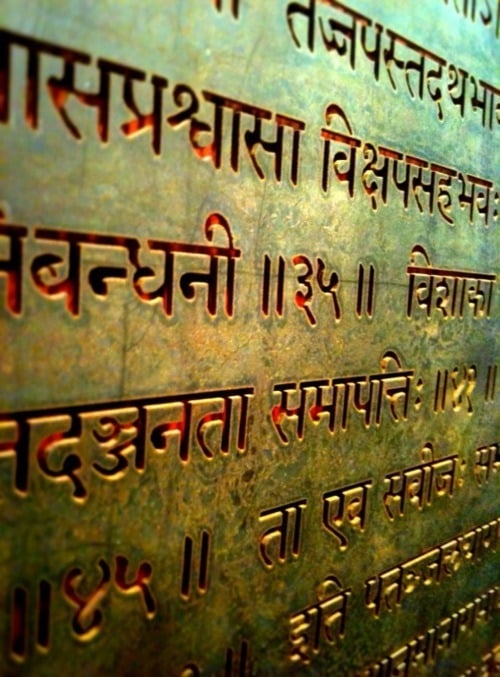A sutra is an aphorism, or collection of aphorisms in a manual or script from Buddhism, Hinduism, or Jainism. Siv means thread or line holding things together, which likely literally referred to the palm leaves used to write the manuscripts. This separates them from the Vedas which were passed down orally until recently. This form of literature was designed for concision, or using the least amount of words necessary to convey an idea, and were meant to be memorized and learned via scientific self-study, also known as Svadhyaya.
A sutra is a bit different in Jainism compared to Buddhism and Hinduism. In Jainism, Sutra refers to the canonized sermons of Mahavira, contained in the Jain Agamas, and to some later (post-canonical) normative texts. The Jain Agamas are known as the canon of Jainism and explain the religion.
In Buddhism, a sutra refers mostly to the canon the Gautama Buddha. Some think that the Buddhist usage of sutra was actually a mis-translation of sutta which the Buddha used to describe his first teachings. This is supported by the early Buddhist sutras; they do not present the aphoristic, nearly cryptic nature of the Hindu sutras, even though they were also designed for oral memorization. They share characteristics of “good news” of the Jain sutras.
An Aphorism is a greek word, meaning definition or distinction. Hypocrates was the first Greek to coin the term and the first sentence of his work using them was the following: ‘Life is short, art long, opportunity fleeting, experience deceptive, judgment difficult.’ In Hinduism, the terms is used for descriptions of phyiscal, metaphysical, moral, philosophical, or a concise statement containing a subjective truth or astute observation. Patanjali’s 196 yoga sutras are the basis for Ashtanga yoga, where Patanjali aggregated previous works on yoga to formulate and create the 8 limbs of yoga.
It seems like every teacher is trying to find new aphorisms to deliver to their classes, insights about cultural life in America and other aspects of life in the 21st century. Its just an observation, but it seems to be a basis for how the human mind functions, that we repeat memorized snippets that resonate with our intellect, our feelings, or whatever. The yoga sutras are extremely complex and cryptic, especially considering the diverse knowledge surrounding their creation, origin, and evolution over the hundreds of years that they have existed.
What sayings speak to you? Brian Kest has a quote that I can’t forget, “try to find a sweet spot that’s between too much and not enough, then try to stay there.” Sharing is caring…. 🙂

